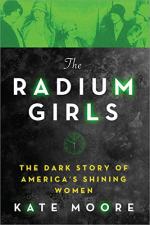
|
| Name: _________________________ | Period: ___________________ |
This test consists of 15 multiple choice questions and 5 short answer questions.
Multiple Choice Questions
1. What was the amount of the lowest settlement offered by the Waterbury Company to one of its former workers' families?
(a) $368.66.
(b) $675.25.
(c) $43.75.
(d) $1,300.50.
2. To what hospital was Ella Cruse admitted when her pimple grew in size and caused her entire face to swell?
(a) General Hospital.
(b) Newark Hospital.
(c) St. Columba Hospital.
(d) Ottawa City Hospital.
3. When Swen Kjaer requested information from Radium Dial about Ella Cruse during his national investigation of radium poisoning, what information about Ella was he given?
(a) Her blood type.
(b) Her employment dates.
(c) Her production rates.
(d) Her time sheets.
4. Where did Catherine Wolfe meet her future husband, Tom Wolfe?
(a) At church.
(b) At a picnic.
(c) At the library.
(d) At school.
5. Marguerite Carlough died in the early morning hours of what holiday in 1925?
(a) Boxing Day.
(b) Labor Day.
(c) Valentine's Day.
(d) Halloween.
6. Due to radium poisoning, Edna Hussman's legs eventually took on what condition?
(a) Her legs were perpetually fractured.
(b) Her legs were irrevocably crossed.
(c) Her legs had no feeling in them.
(d) Her legs would not bend at the knee.
7. Most of the dial-painters who received settlements from the United States Radium Corporation did what during the following summer?
(a) Went on trips.
(b) Died.
(c) Checked into the hospital.
(d) Became paraplegics.
8. Who gave her father $2,000 to pay off his mortgage once she had received her settlement?
(a) Katherine Schaub.
(b) Grace Fryer.
(c) Marguerite Carlough.
(d) Catherine Wolfe Donohue.
9. Though a normal blood count should be 100%, Marguerite Carlough's blood eventually reached what percentage prior to her death?
(a) 30%.
(b) 20%.
(c) 60%.
(d) 70%.
10. What was the reaction of James Ewing when the five young women he breath-tested for radium tested positive for radioactivity?
(a) He wondered if there were fraud involved and suggested they conduct another examination at a hotel.
(b) He stepped down as an involved physician.
(c) He reported the positive results to the Department of Health.
(d) He thought the test instruments were faulty.
11. What material did Rufus Reed use to construct a painting pen that was then given to the dial-painters as a suggested replacement for their brushes?
(a) Aluminum.
(b) Copper.
(c) Paper.
(d) Glass.
12. For what necessary element of the Cruses' case did they not have funds to pay?
(a) A radioactivity test of Ella's breath.
(b) The down payment to the lawyer.
(c) An exhumation of Ella's body.
(d) A series of bone x-rays.
13. What did October 29, 1929 come to be called?
(a) Black Wednesday.
(b) Black Friday.
(c) Black Sunday.
(d) Black Tuesday.
14. Once Katherine Schaub started staying at home and refusing to go out, what was the only occasion to get her out of the house?
(a) Grocery shopping.
(b) Church.
(c) Trial dates.
(d) Her mother's funeral.
15. How much money did the United States Radium Corporation eventually agree to give Mae Canfield in 1930?
(a) $3,000.
(b) $12,000.
(c) $8,000.
(d) $5,000.
Short Answer Questions
1. When the Westclox company hit a new production high of 1.5 million luminous watches in 1926, what percentage of the watches were painted by Radium Dial?
2. What arrangements did Rufus Reed make for Peg Looney when she collapsed at work at Radium Dial in August of 1929?
3. What types of product were produced by the Waterbury Company in Connecticut?
4. In what city was St. Columba Church located?
5. In what season and year did Katherine Schaub and Harrison Martland begin creating their list of radium victims?
|
This section contains 566 words (approx. 2 pages at 300 words per page) |

|




